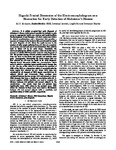Higuchi fractal dimension of the electroencephalogram as a biomarker for early detection of Alzheimer's disease
| dc.contributor.author | Al-Nuaimi, Ali H. Husseen | |
| dc.contributor.author | Jammeh, Emmanuel | |
| dc.contributor.author | Sun, Lingfen | |
| dc.contributor.author | Ifeachor, Emmanuel | |
| dc.date.accessioned | 2018-01-09T09:57:04Z | |
| dc.date.available | 2018-01-09T09:57:04Z | |
| dc.date.issued | 2017-07-11 | |
| dc.identifier.isbn | 9781509028092 | |
| dc.identifier.issn | 1557-170X | |
| dc.identifier.issn | 1558-4615 | |
| dc.identifier.uri | http://hdl.handle.net/10026.1/10505 | |
| dc.description.abstract |
It is widely accepted that early diagnosis of Alzheimer's disease (AD) makes it possible for patients to gain access to appropriate health care services and would facilitate the development of new therapies. AD starts many years before its clinical manifestations and a biomarker that provides a measure of changes in the brain in this period would be useful for early diagnosis of AD. Given the rapid increase in the number of older people suffering from AD, there is a need for an accurate, low-cost and easy to use biomarkers that could be used to detect AD in its early stages. Potentially, the electroencephalogram (EEG) can play a vital role in this but at present, no reliable EEG biomarker exists for early diagnosis of AD. The gradual slowing of brain activity caused by AD starts from the back of the brain and spreads out towards other parts. Consequently, determining the brain regions that are first affected by AD may be useful in its early diagnosis. Higuchi fractal dimension (HFD) has characteristics which make it suited to capturing region-specific neural changes due to AD. The aim of this study is to investigate the potential of HFD of the EEG as a biomarker which is associated with the brain region first affected by AD. Mean HFD value was calculated for all channels of EEG signals recorded from 52 subjects (20-AD and 32-normal). Then, p-values were calculated between the two groups (AD and normal) to detect EEG channels that have a significant association with AD. k-nearest neighbor (KNN) algorithm was used to compute the distance between AD patients and normal subjects in the classification. Our results show that AD patients have significantly lower HFD values in the parietal areas. HFD values for channels in these areas were used to discriminate between AD and normal subjects with a sensitivity and specificity values of 100% and 80%, respectively. | |
| dc.format.extent | 2320-2324 | |
| dc.format.medium | ||
| dc.language.iso | en | |
| dc.publisher | IEEE | |
| dc.subject | Alzheimer's disease | |
| dc.subject | EEG biomarkers | |
| dc.subject | Higuchi fractal dimension | |
| dc.subject | early diagnosis | |
| dc.title | Higuchi fractal dimension of the electroencephalogram as a biomarker for early detection of Alzheimer's disease | |
| dc.type | conference | |
| dc.type | Journal Article | |
| plymouth.author-url | https://www.webofscience.com/api/gateway?GWVersion=2&SrcApp=PARTNER_APP&SrcAuth=LinksAMR&KeyUT=WOS:000427085302186&DestLinkType=FullRecord&DestApp=ALL_WOS&UsrCustomerID=11bb513d99f797142bcfeffcc58ea008 | |
| plymouth.date-start | 2017-07-11 | |
| plymouth.date-finish | 2017-07-15 | |
| plymouth.volume | 2017 | |
| plymouth.publisher-url | http://ieeexplore.ieee.org/xpl/mostRecentIssue.jsp?punumber=8026122 | |
| plymouth.conference-name | 2017 39th Annual International Conference of the IEEE Engineering in Medicine and Biology Society (EMBC) | |
| plymouth.publication-status | Published | |
| plymouth.journal | 2017 39th Annual International Conference of the IEEE Engineering in Medicine and Biology Society (EMBC) | |
| dc.identifier.doi | 10.1109/EMBC.2017.8037320 | |
| plymouth.organisational-group | /Plymouth | |
| plymouth.organisational-group | /Plymouth/Faculty of Science and Engineering | |
| plymouth.organisational-group | /Plymouth/Faculty of Science and Engineering/School of Engineering, Computing and Mathematics | |
| plymouth.organisational-group | /Plymouth/REF 2021 Researchers by UoA | |
| plymouth.organisational-group | /Plymouth/REF 2021 Researchers by UoA/UoA11 Computer Science and Informatics | |
| plymouth.organisational-group | /Plymouth/REF 2021 Researchers by UoA/UoA12 Engineering | |
| plymouth.organisational-group | /Plymouth/Users by role | |
| plymouth.organisational-group | /Plymouth/Users by role/Academics | |
| plymouth.organisational-group | /Plymouth/Users by role/Researchers in ResearchFish submission | |
| dc.publisher.place | Orlando, Florida, USA | |
| dcterms.dateAccepted | 2017-04-19 | |
| dc.identifier.eissn | 1558-4615 | |
| dc.rights.embargoperiod | Not known | |
| rioxxterms.funder | EPSRC | |
| rioxxterms.identifier.project | Novel Point-of-Care Diagnostic Techniques for Dementia | |
| rioxxterms.versionofrecord | 10.1109/EMBC.2017.8037320 | |
| rioxxterms.licenseref.uri | http://www.rioxx.net/licenses/all-rights-reserved | |
| rioxxterms.licenseref.startdate | 2017-07-11 | |
| rioxxterms.type | Conference Paper/Proceeding/Abstract | |
| plymouth.funder | Novel Point-of-Care Diagnostic Techniques for Dementia::EPSRC |


